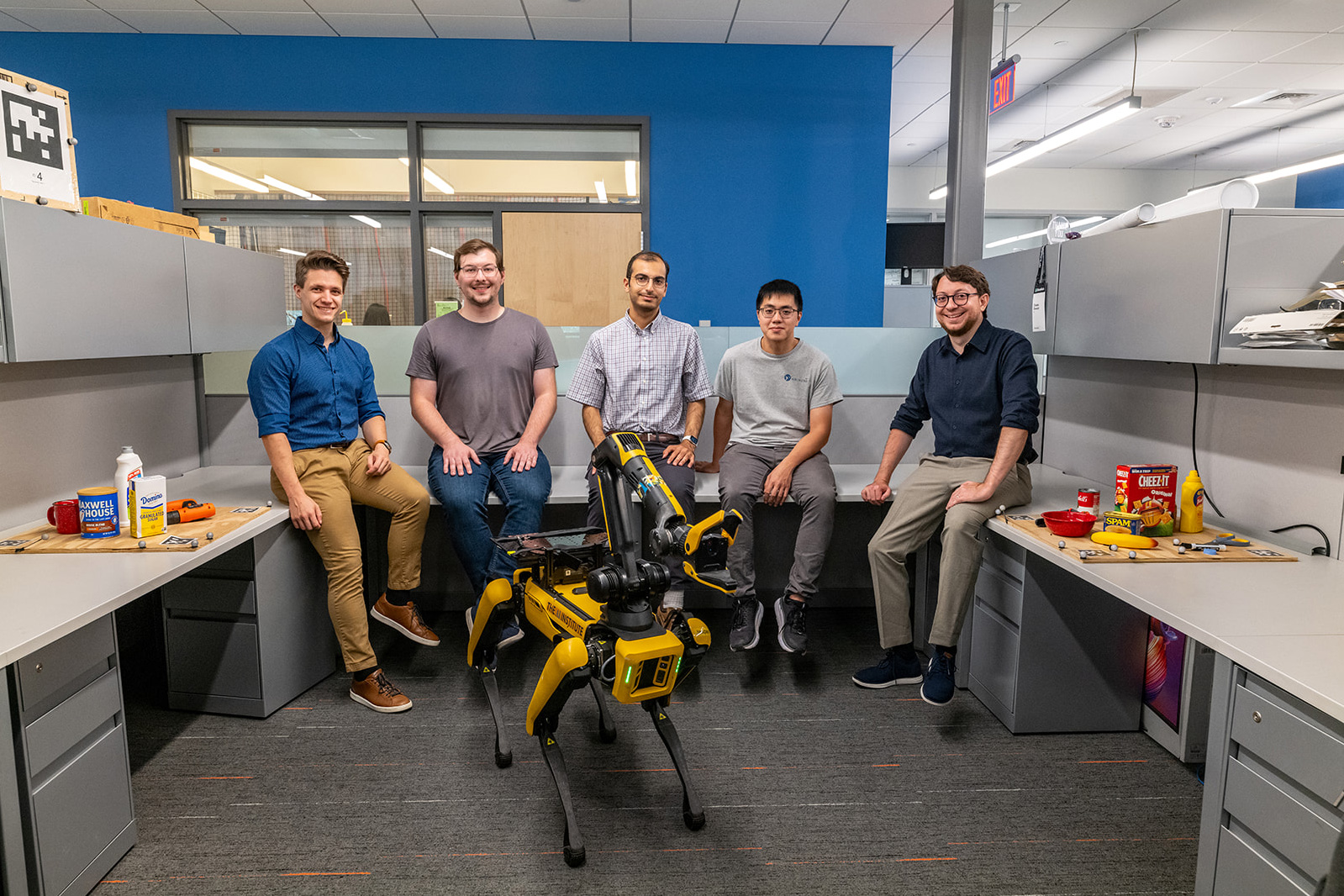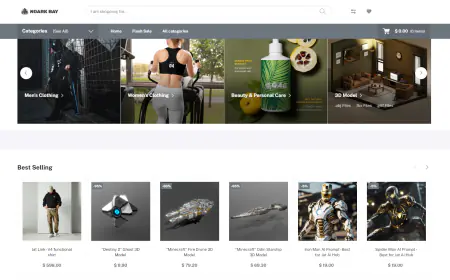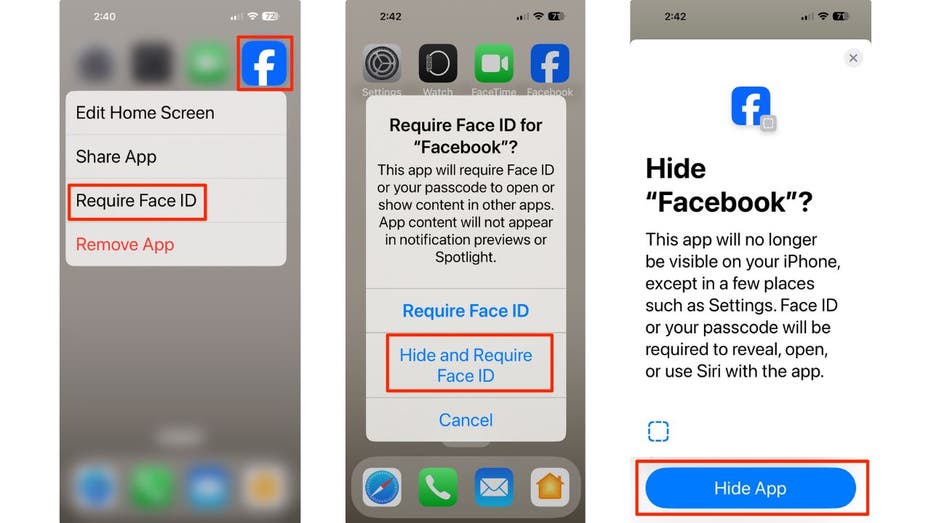Shaping the future: OMRON’s data-driven journey with AWS
OMRON Corporation is a leading technology provider in industrial automation, healthcare, and electronic components. In their Shaping the Future 2030 (SF2030) strategic plan, OMRON aims to address diverse social issues, drive sustainable business growth, transform business models and capabilities, and accelerate digital transformation. At the heart of this transformation is the OMRON Data & Analytics Platform (ODAP), an innovative initiative designed to revolutionize how the company harnesses its data assets. This post explores how OMRON Europe is using Amazon Web Services (AWS) to build its advanced ODAP and its progress toward harnessing the power of generative AI.

This post is co-written with Emrah Kaya and Xinyi Zhou from Omron Europe.
Data is one of the most critical assets of many organizations. They’re constantly seeking ways to use their vast amounts of information to gain competitive advantages.
OMRON Corporation is a leading technology provider in industrial automation, healthcare, and electronic components. In their Shaping the Future 2030 (SF2030) strategic plan, OMRON aims to address diverse social issues, drive sustainable business growth, transform business models and capabilities, and accelerate digital transformation. At the heart of this transformation is the OMRON Data & Analytics Platform (ODAP), an innovative initiative designed to revolutionize how the company harnesses its data assets.
This post explores how OMRON Europe is using Amazon Web Services (AWS) to build its advanced ODAP and its progress toward harnessing the power of generative AI.
Challenges
By using advanced data and analytics capabilities, organizations can gain valuable insights into their operations, industry trends, and customer behaviors, leading to more informed strategies and increased insight. This approach is particularly powerful when applied to mission-critical data such as enterprise resource planning (ERP) and customer relationship management (CRM) systems because these contain information about internal processes, supply chain management, and customer interactions. By analyzing their data, organizations can identify patterns in sales cycles, optimize inventory management, or help tailor products or services to meet customer needs more effectively. However, organizations often face significant challenges in realizing these benefits because of:
- Data silos – Organizations often use multiple systems across regions or departments. Integrating these diverse sources to create a single source of truth is complex, making it difficult to generate unified reports or analyze cross-functional trends.
- Data governance challenges – Maintaining consistent data governance across different systems is crucial but complex. Implementing uniform policies across different systems and departments presents significant hurdles.
- Different formats and standards – Systems typically use varied data formats and structures. This disparity complicates data integration and cross-system analysis, requiring significant effort to reconcile and harmonize data for comprehensive insights.
OMRON Data & Analytics Platform
To address these challenges, OMRON Europe (hereinafter “OMRON”) decided to implement an advanced data and analytics platform, ODAP. This innovative solution was designed to serve as a centralized hub for specific data assets, breaking down the barriers between various data sources and systems.
The following diagram shows a simplified architecture and some of the services and architectural patterns used for ODAP.

ODAP aimed to seamlessly integrate data from multiple ERP and CRM systems in addition to other relevant data sources across the organization. Amazon AppFlow was used to facilitate the smooth and secure transfer of data from various sources into ODAP. Additionally, Amazon Simple Storage Service (Amazon S3) served as the central data lake, providing a scalable and cost-effective storage solution for the diverse data types collected from different systems. The robust security features provided by Amazon S3, including encryption and durability, were used to provide data protection. Finally, ODAP was designed to incorporate cutting-edge analytics tools and future AI-powered insights.
Some of these tools included AWS Cloud based solutions, such as AWS Lambda and AWS Step Functions. Lambda enables serverless, event-driven data processing tasks, allowing for real-time transformations and calculations as data arrives. Step Functions complements this by orchestrating complex workflows, coordinating multiple Lambda functions, and managing error handling for sophisticated data processing pipelines. This enables OMRON to extract meaningful patterns and trends from its vast data repositories, supporting more informed decision-making at all levels of the organization.
OMRON’s data strategy—represented on ODAP—also allowed the organization to unlock generative AI use cases focused on tangible business outcomes and enhanced productivity. Part of a comprehensive approach to using artificial intelligence and machine learning (AI/ML) and generative AI includes a strong data strategy that can help provide high quality and reliable data.
Embracing generative AI with Amazon Bedrock
The company has identified several use cases where generative AI can significantly impact operations, particularly in analytics and business intelligence (BI).
One key initiative is ODAPChat, an AI-powered chat-based assistant employees can use to interact with data using natural language queries. This tool democratizes data access across the organization, enabling even nontechnical users to gain valuable insights.
A standout application is the SQL-to-natural language capability, which translates complex SQL queries into plain English and vice versa, bridging the gap between technical and business teams. To power these advanced AI features, OMRON chose Amazon Bedrock. This fully managed service offers a range of foundation models (FMs), providing the flexibility to select the most suitable model for each use case. The straightforward implementation of Amazon Bedrock, coupled with its scalability to handle growing data volumes and user requests, made it an ideal choice for OMRON. The ability of Amazon Bedrock to support various models from different providers helps make sure that OMRON can always use the most advanced AI capabilities as they evolve.
Crucially, the robust security features provided by Amazon Bedrock align perfectly with OMRON’s stringent data protection requirements. Some highlights include:
- Fine-grained access controls
- Networking security features such as encryption of data in transit and at rest, or the ability to use private virtual private clouds (VPCs), helping to make sure that sensitive business data remains secure even when being processed by AI models
- Amazon Bedrock Guardrails
These strict security controls offer a comprehensive security approach that allows OMRON to innovate with AI while maintaining the highest standards of data governance and protection.
The following diagram shows a basic layout of how the solution works. It helps illustrate the main parts and how they work together to make the AI assistant do its job.

The system has three main sections:
- User interface – Users engage with the chat interface hosted on AWS. Amazon Cognito handles the user authentication processes, providing secure access to the application.
- Input processing backend – The Amazon API Gateway receives incoming messages, which are then processed by containers running on Amazon Elastic Container Service (Amazon ECS). Chat conversations are preserved in Amazon DynamoDB to be used for the follow-up conversation. Amazon Bedrock takes care of generating AI responses, and tools are configured using LangChain, which helps determine how to handle different types of queries. When needed, the system can access an ODAP data warehouse to retrieve additional information.
- Document management – Documents are securely stored in Amazon S3, and when new documents are added, a Lambda function processes them into chunks. These chunks are converted into embeddings using Amazon Bedrock and the embeddings are stored in an Amazon OpenSearch Service vector store for semantic search.
Results and future plans
The implementation of ODAP and ODAPChat on AWS has already yielded significant benefits for OMRON:
- Optimization of reports, leading to more efficient and insightful analysis
- SQL-to-natural language capabilities powered by generative AI, making data more accessible to nontechnical users
- Increased business agility with infrastructure fully deployed in the cloud
- Data democratization, enabling more employees to use data-driven insights
Looking ahead, OMRON plans to significantly expand its use of AWS services and further use generative AI capabilities. The company aims to integrate additional data sources, including other mission-critical systems, into ODAP. This expansion will be coupled with enhanced data governance measures to help promote data quality and compliance across the growing data solution.
OMRON is also exploring more advanced generative AI use cases, such as INSERT_INITIATIVES. These initiatives will use the evolving capabilities provided by Amazon Bedrock to potentially incorporate advanced AI models and security features.
Conclusion
OMRON’s journey with AWS demonstrates the transformative power of cloud-based data solutions and generative AI in overcoming data silos and driving business innovation. By using AWS services such as Amazon AppFlow, Amazon S3, and Amazon Bedrock, OMRON has created a comprehensive, secure, and adaptable data and analytics platform that not only meets its current needs, but also positions the company for future growth and innovation.
As organizations across industries grapple with similar data challenges, OMRON’s story serves as an inspiring example of how embracing cloud technologies and AI can lead to significant business transformation and competitive advantage.
About the Authors
Emrah Kaya is Data Engineering Manager at Omron Europe and Platform Lead for ODAP Project. With his extensive background on Cloud & Data Architecture, Emrah leads key OMRON’s technological advancement initiatives, including artificial intelligence, machine learning, or data science.
Xinyi Zhou is a Data Engineer at Omron Europe, bringing her expertise to the ODAP team led by Emrah Kaya. She specializes in building efficient data pipelines and managing AWS infrastructure, while actively contributing to the implementation of new solutions that advance ODAP’s technological capabilities.
Emel Mendoza is a Senior Solutions Architect at AWS based in the Netherlands. With passion for cloud migrations and application modernization, Emel helps organizations navigate their digital transformation journeys on AWS. Emel leverages his decade of experience to guide customers in adopting AWS services and architecting scalable, efficient solutions.
Jagdeep Singh Soni is a Senior Partner Solutions Architect at AWS based in the Netherlands. He uses his passion for Generative AI to help customers and partners build GenAI applications using AWS services. Jagdeep has 15 years of experience in innovation, experience engineering, digital transformation, cloud architecture and ML applications.



















![[PRO Tips] Use the BCG matrix to help you analyze the current situation, product positioning, and formulate strategies](https://i.scdn.co/image/ab6765630000ba8a165b48c48c4321b36a1df7b9?#)
![[Business Talk] BYD's Hiring Standards: A Reflection of China's Competitive Job Market](https://i.scdn.co/image/ab6765630000ba8a1a1e0af3aefae3a685793e7c?#)
![[PRO Tips] What is ESG? How is it different from CSR and SDGs? 3 keywords that companies and investors should know](https://i.scdn.co/image/ab6765630000ba8a76dbe129993a62e85226c2b4?#)
![[Business Talk] Elon Musk](https://i.scdn.co/image/ab6765630000ba8ac91eb094519def31d2b67898?#)


















